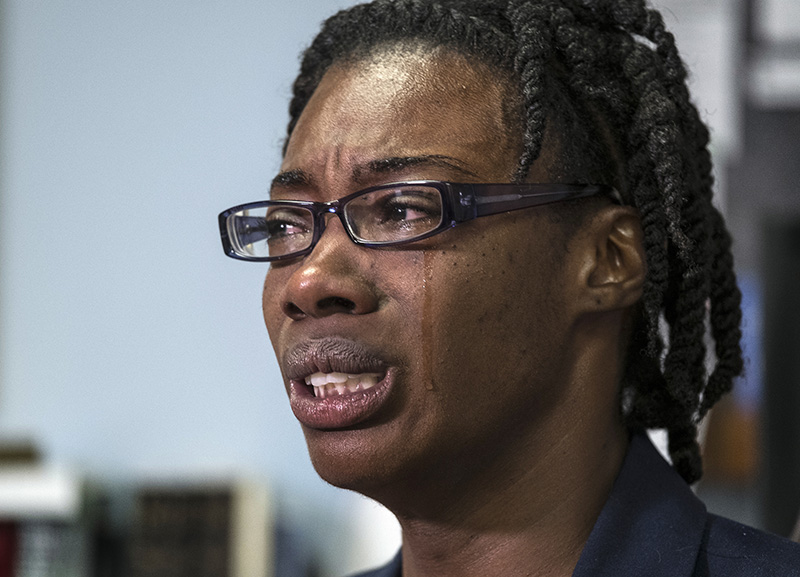We’re not going to spend a lot of time talking about what happened.
Not that Austin Police Officer Bryan Richter’s June 2015 takedown – let’s not dignify it by calling it an “arrest” – of 26-year-old school teacher Breaion King is not worthy of discussion.
As seen in a dashcam video unearthed last week by the Austin American-Statesman, Richter, who is white, hauls King, who is African American, out of her car, twice slams her to the ground, shackles her hands behind her back and forces her down to the hood of his patrol car, her arms held high to maximize pain and compliance.
King’s sin? During a traffic stop, she gave Richter a little lip. “Could you please hurry up?” she snips. And he proceeds to lose his mind.
So what happened is certainly worth talking about. But it is what was said afterward that is ultimately more insidious. King, shackled in the back of a police cruiser, is convinced her mistreatment is related to the color of her skin. She asks another white officer, Patrick Spradlin, if he believes racism still exists.
Spradlin answers affirmatively. “But let me ask you this,” he says. “Do you believe it goes both ways?”
She says yes, but starts explaining about how whites have more power. Spradlin isn’t buying it. “Why are so many people afraid of black people?” he asks. “…Violent tendencies. … That’s why a lot of the white people are afraid, and I don’t blame them.”
Spradlin is speaking, mind you, to a slightly built woman his beefy colleague just violently assaulted for no reason other than pique. More to the point, he is speaking to a woman whose heritage includes 400 years of kidnapping, lynching, bombing, burning, rape, riot and, yes, police brutality, at the hands of people who look like him.
But it is “black people” – note that no other qualifier is necessary – who, he says, have these supposed “violent tendencies.”
And let us not ignore Spradlin’s talk of how racism “goes both ways.” Here’s what King was trying to explain when he cut her off:
The black person who doesn’t like white people can call names, maybe even physically assault some individual. But she has virtually no power to express that bigotry with impunity upon multiple victims through public institutions. If she is a cop she cannot, for example, physically assault white motorists for no reason and expect to get away with it. By contrast, do you know how Bryan Richter was “punished” for his brutality?
He had to go for counseling. Oh, and extra training.
Spradlin is not alone in embracing false equivalence, though. A 2011 study by professors Michael Norton of Harvard and Samuel Sommers of Tufts University, finds that many white Americans now identify bias against them as a bigger problem than bias against blacks.
They can point to no statistic to support this absurd idea – there is none. Unfortunately, the new American ethos, as illustrated vividly last week at the Republican National Convention, holds that the truth you “feel” is more authoritative than the truth that is actually, well … true.
Since the video of Richter’s brutality came to light, the police chief and various city officials have pronounced themselves appalled and there is talk of reform. That’s all well and good, but this is bigger than police. Police reflect the society they serve.
So, though most of them would know better than to say it out loud, Spradlin’s thinking recurs in landlords who won’t rent, bankers who won’t lend, doctors who won’t treat, executives who won’t hire.
It recurs in an ongoing daily act of battery upon African-American aspiration. And hope. And faith.
Bryan Richter assaulted Breaion King. Of that, there can be no doubt. By contrast, Spradlin only talked to her, their conversation calm and composed. But make no mistake.
He assaulted her, too.
Leonard Pitts is a columnist for The Miami Herald. He can be contacted at:
Send questions/comments to the editors.


